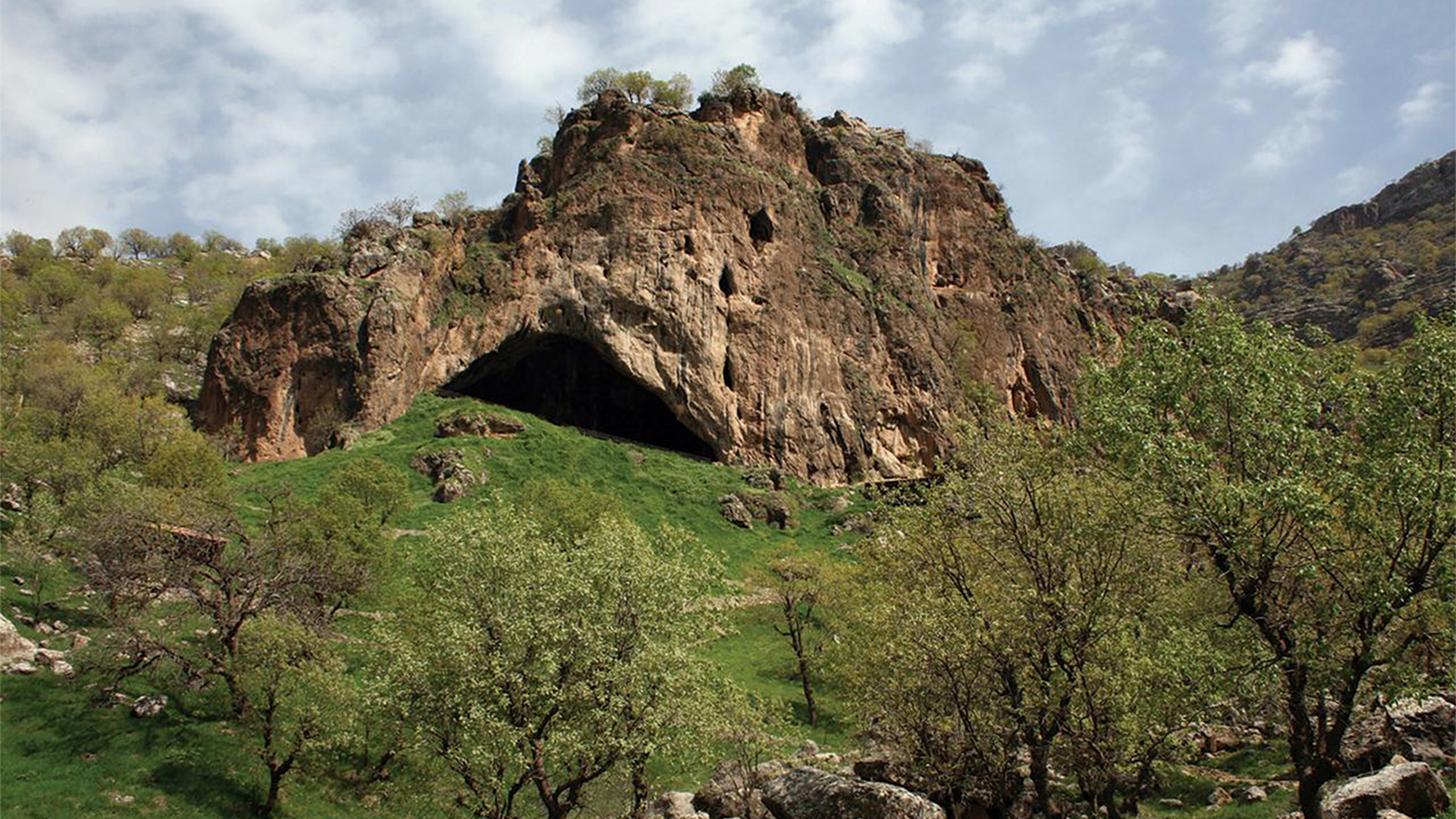The British newspaper Daily Mail covered the recent discovery at an archaeological site in the Kurdistan region of Iraq, and said that it provides important evidence that Neanderthals were conducting burial rites for their dead.
Writer Ian Randall said in an article for the newspaper that the discovery shows the first detailed "Neanderthal" skeleton after painstaking digging that lasted more than 20 years, indicating in this regard that this skeleton dating back to a middle-aged person who lived 70 thousand years ago was buried in a way Specific and intended from another primitive human.
The skeleton of a middle-aged man who lived 70,000 years ago (British Press)
The writer added that experts had found the remains of the "Neanderthal" skeleton intact with his chest and hands in the Shander Cave in Iraqi Kurdistan, indicating that this discovery raised the idea that Neanderthals were living their lives with its various complications with a lot of evidence supporting this hypothesis.
The writer adds that although the sex of the skeleton has not yet been determined, early analysis indicates that this skeleton - which he called "Shander Z" - has the teeth of a middle-aged adult.
Shander Cave in Iraqi Kurdistan (British Press)
The cave witnessed the first excavations of a "Neanderthal" during the fifties of the last century, carried out by the American archaeologist Ralph Saluki and his team from Columbia University, and during which they discovered 9 Neanderthal skeletons of different ages, with an age of more than 40 thousand years.
THIS IS EXCITING! The first articulated Neanderthal skeleton to come out of the ground for over 20 years has been unearthed at one of the most important sites of mid-20th century archeology: Shanidar Cave, in the foothills of Iraqi Kurdistan https://t.co/7hNCs3YEhh - The Ice Age ❄️ (@Jamie_Woodward_) February 18, 2020 |
But he was not able to fully extract these structures, and parts of them remained buried under the earth, while the University of Cambridge team discovered the tenth skeleton in 2018.
THIS IS EXCITING! The first articulated Neanderthal skeleton to come out of the ground for over 20 years has been unearthed at one of the most important sites of mid-20th century archeology: Shanidar Cave, in the foothills of Iraqi Kurdistan https://t.co/7hNCs3YEhh - The Ice Age ❄️ (@Jamie_Woodward_) February 18, 2020 |
These discoveries included one of the skeletons, "Schneider 4", which was surrounded by groups of ancient pollen, something that archaeologists considered an indication that humans were placing flowers in graves before the burial, which sparked much debate about whether ancient humans were culturally advanced enough. To perform death rituals and orderly bury the dead.
The writer notes that the discovery of the remains of "Shander Z" - who appeared to be in a relaxed state while cushioning a stone supporting his head - is the latest evidence to support this idea, explaining that researchers have reopened the excavation site to collect new samples from the remains to find new discoveries.
Dr Emma Pomeroy of the Department of Archeology in Cambridge and lead author of a paper on the discovery said, “Having essential evidence of this quality at this famous Neanderthal site will allow us to use modern technologies to explore everything from DNA in ancient times to solid questions. On the methods of death of primitive man. "
The Shander Cave - which is located at the foot of Mount Bradost (145 km northeast of Erbil, the capital of Iraqi Kurdistan) - is the oldest and largest cave discovered so far in Iraq, and is located at an altitude of 2,200 meters above sea level and overlooks a deep, tree-dense valley.

